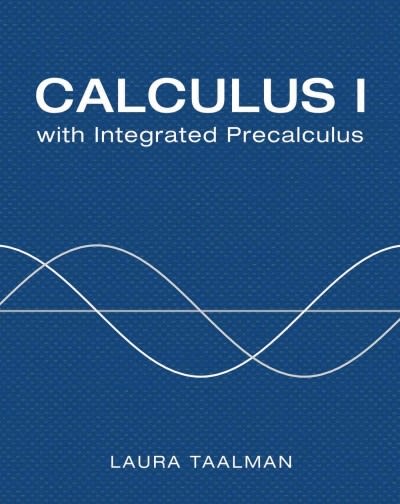Question
Socially conscious investors screen out stocks of alcohol and tobacco makers, firms with poor environmental records, and companies with poor labor practices. Some examples of
Socially conscious investors screen out stocks of alcohol and tobacco makers, firms with poor environmental records, and companies with poor labor practices. Some examples of "good," socially conscious companies are Johnson and Johnson, Dell Computers, Bank of America, and Home Depot. The question is, are such stocks overpriced? One measure of value is the P/E, or price-to-earnings ratio. High P/E ratios may indicate a stock is overpriced. For the S&P Stock Index of all major stocks, the mean P/E ratio is= 19.4. A random sample of 36 "socially conscious" stocks gave a P/E ratio sample mean ofx=17.9,with sample standard deviations=5.4.Does this indicate that the mean P/E ratio of all socially conscious stocks is different (either way) from the mean P/E ratio of the S&P Stock Index? Use= 0.05.
(a) What is the level of significance?
(b) State the null and alternate hypotheses.
- H0:= 19.4;H1:19.4
- H0:= 19.4;H1:< 19.4
- H0:> 19.4;H1:= 19.4
- H0:= 19.4;H1:> 19.4
- H0:19.4;H1:= 19.4
(c) What sampling distribution will you use? Explain the rationale for your choice of sampling distribution.
- The standard normal, since the sample size is large andis known.
- The Student'st, since the sample size is large andis unknown.
- The Student'st, since the sample size is large andis known.
- The standard normal, since the sample size is large andis unknown.
(c) What is the value of the sample test statistic? (Round your answer to three decimal places.)
(d) Estimate theP-value.
- P-value > 0.250
- 0.100 <P-value < 0.250
- 0.050 <P-value < 0.100
- 0.010 <P-value < 0.050
- P-value < 0.010
(e) Sketch the sampling distribution and show the area corresponding to theP-value.
(f) Based on your answers in parts (a) to (c), will you reject or fail to reject the null hypothesis? Are the data statistically significant at level?
- At the= 0.05 level, we reject the null hypothesis and conclude the data are statistically significant.
- At the= 0.05 level, we reject the null hypothesis and conclude the data are not statistically significant.
- At the= 0.05 level, we fail to reject the null hypothesis and conclude the data are statistically significant.
- At the= 0.05 level, we fail to reject the null hypothesis and conclude the data are not statistically significant.
(g) Interpret your conclusion in the context of the application.
- There is sufficient evidence at the 0.05 level to conclude that the mean P/E ratio of all socially conscious stocks differs from the mean P/E ratio of the S&P Stock Index.
- There is insufficient evidence at the 0.05 level to conclude that the mean P/E ratio of all socially conscious stocks differs from the mean P/E ratio of the S&P Stock Index.
Step by Step Solution
There are 3 Steps involved in it
Step: 1

Get Instant Access to Expert-Tailored Solutions
See step-by-step solutions with expert insights and AI powered tools for academic success
Step: 2

Step: 3

Ace Your Homework with AI
Get the answers you need in no time with our AI-driven, step-by-step assistance
Get Started


